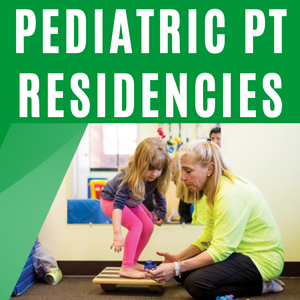Back
Decreasing Gaps in Service and Increasing Collaborion for Children in Out-of-home-care

Emily J. Quinn, PT, DPT
Pediatric Physical Therapy Resident
OHSU
Portland, Oregon, United States
Purpose: The purpose of this study, originally part of a capstone project for the APTA Centennial Scholars Program, was to build foundational knowledge regarding out-of-home care (which includes, foster care, kinship care, and emergency placement), learn how PTs/PTAs are currently serving this population, and gain preliminary data on where service gaps exist for this population as it relates to pediatric physical therapy.
Description: This project included the creation of a resource of key terms and definitions related to children in out-of-home care and a survey to gain data on current care and gaps in care. Using snowball methodology, an eight-question survey was sent out via email, social medial postings in physical therapy groups and by word of mouth. The survey was open for one month in May to June 2021 Spring to early Summer of 2021.
Summary of Use: The results included 132 responses from 40 states from clinicians of all settings, with outpatient/ outpatient private practice, EI, and school-based having the most responses. The majority (75.8%) of respondents reported working with children in out-of-home care on their caseloads, with 28% of respondents working with this population 76-100% of the time. In terms of racial makeup, respondents reported working with children in this population of all races, with White, African American/ Black, and Hispanic/ Latinx being the most prevalent. Majority of skills worked on were developmental skills and caregiver education, with limited care in transitional life skills (0.8%). Collaboration with other healthcare professionals was mostly with OT and SLP, 100% and 96.1% respectively s, 53.4% with social work, 50.5% with physicians, and 30.1% collaborating with mental health providers. Trends for barriers to care for this population include difficulty with carryover of care between caregivers, difficulty navigating the healthcare system, decreased communication with care team (including case managers), and frequent transitions.
Importance to Members: Limited literature exists in relation to this topic and population, with very little data found in relation to PT care in a literature search. Furthermore, trends from initial survey show majority of clinicians work with this population. However, initial survey results also indicate decreasing care for this population as the children age, with most care being in the developmental years. Initial data also demonstrates limited collaboration outside of other rehabilitation professions. The current gaps in service found through this project, allow for opportunities for growth in the profession and where care can be improved to better serve this population.
Description: This project included the creation of a resource of key terms and definitions related to children in out-of-home care and a survey to gain data on current care and gaps in care. Using snowball methodology, an eight-question survey was sent out via email, social medial postings in physical therapy groups and by word of mouth. The survey was open for one month in May to June 2021 Spring to early Summer of 2021.
Summary of Use: The results included 132 responses from 40 states from clinicians of all settings, with outpatient/ outpatient private practice, EI, and school-based having the most responses. The majority (75.8%) of respondents reported working with children in out-of-home care on their caseloads, with 28% of respondents working with this population 76-100% of the time. In terms of racial makeup, respondents reported working with children in this population of all races, with White, African American/ Black, and Hispanic/ Latinx being the most prevalent. Majority of skills worked on were developmental skills and caregiver education, with limited care in transitional life skills (0.8%). Collaboration with other healthcare professionals was mostly with OT and SLP, 100% and 96.1% respectively s, 53.4% with social work, 50.5% with physicians, and 30.1% collaborating with mental health providers. Trends for barriers to care for this population include difficulty with carryover of care between caregivers, difficulty navigating the healthcare system, decreased communication with care team (including case managers), and frequent transitions.
Importance to Members: Limited literature exists in relation to this topic and population, with very little data found in relation to PT care in a literature search. Furthermore, trends from initial survey show majority of clinicians work with this population. However, initial survey results also indicate decreasing care for this population as the children age, with most care being in the developmental years. Initial data also demonstrates limited collaboration outside of other rehabilitation professions. The current gaps in service found through this project, allow for opportunities for growth in the profession and where care can be improved to better serve this population.

.png)
.jpg)
.png)
.png)
.png)
.png)
